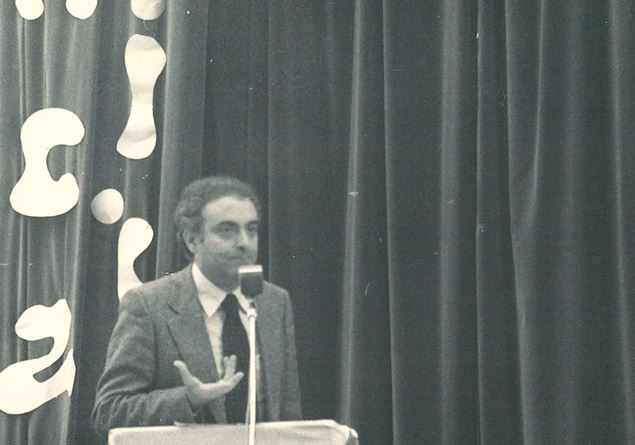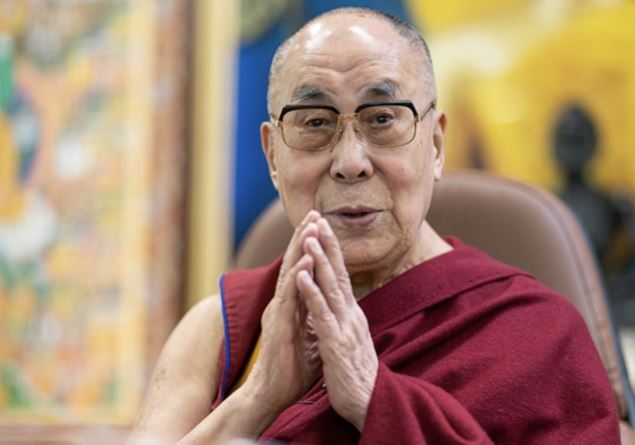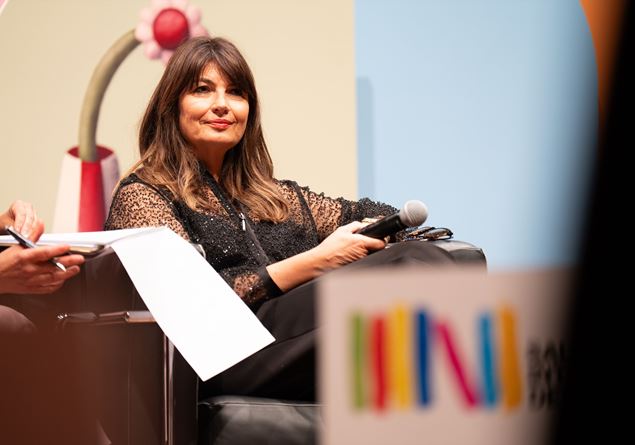San Martino delle Scale, Monreale. August 1963. Piersanti Mattarella plays with the two children, Bernardo and Maria.
On May 24 he would have turned 90 if his life had not been cut short on January 6, 1980. He is Piersanti Mattarella, historic president of the Sicily region, DC’s exponent against current, who grew up politically in the years of the tear and Sicily dominated by Cosa Nostra.
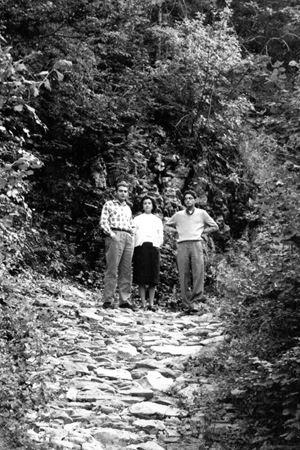
Andalo (Trento), August 1960. Mattarella with his wife, Irma Chiazzese, and his brother Sergio Mattarella.
A man of the institutions, Piersanti, sincere and authoritative interpreter of the political thought of Aldo Moro. A central figure in the process of change of the island to get rid of the yoke of the mafia, of which an exhibition wanted by the Sicily Foundation – “The broken dream. The political and family horizon of Piersanti Mattarella” in progress in Palermo at Villa Zito – returns not only the political stature but the most human face.
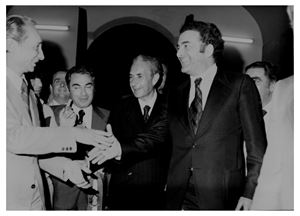
Alcamo (Trapani), 11 June 1976. With the Prime Minister Aldo Moro visits the Municipality of Alcamo. With them the mayor, Vito Filippi.
The exhibition follows the thread of the years: from those of formation and adolescence, to the most intimate moments with its loved ones, to the political stages, within the Christian democracy, to the Municipality of Palermo and the Sicilian Region. Two hundred photographs, mostly unpublished, taken from the family albums and selected by the curators Sergio Intrer, professor at the University of Palermo ed Elvira Terranovajournalist, with the active collaboration of the child Bernardo Mattarella.
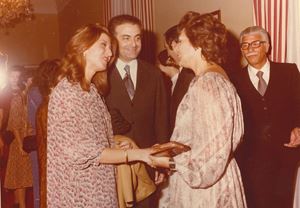
Palermo, September 1978. With his wife Irma Chiazzese at the inauguration of a painting exhibition.
“We did not want to focus on the death of Piersanti Mattarella – says the president of the Foundation, Maria Concetta di Natale – We would like to report to the general attention, however, his work as a man, politician and administrator who still constitutes a reference model for the entire civil society. In particular, we would like to do it for the youngest who did not have the opportunity to know him. “
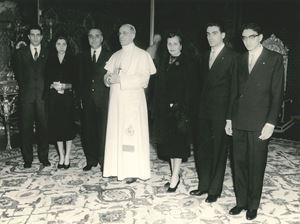
February 25, 1958, Pope Pius XII receives Minister Bernardo Mattarella in private hearing with his wife and children Antonino, Caterina, Piersanti and Sergio.
Designed with educational panels and rooms divided following the different phases of life, the exhibition also consists of objects, including several books of its personal library, and video. And it seems to see it, bent to read with the glasses perched on the nose, the texts exhibited inside the Teche: “The political speeches” by Alcide de Gasperi, “The sense of history in Christian thought” by Jacques Leclercq, the commentary on the encyclical “Populorum progressio” of the “Open Christianity” series, “The Catholic movement in the fascist period” by Giuseppe Rossini …
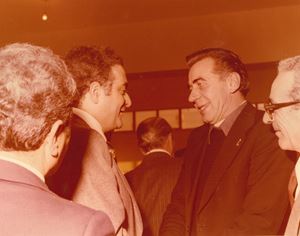
Santa Ninfa March 5, 1978. Mattarella with the parish priest of Santa Ninfa Don Antonio Riboldi.
“We have chosen objects that could help restore man as much as possible in all its facets,” he says Elvira Terranova. Pieces of life, such as the degree thesis, or the agenda that Piersanti Mattarella kept at home and where he pinned all his movements, essential to trace the context in which each photo was taken. “It was an emotionally engaging experience – he adds – because my generation knows only a part of the life of Piersanti Mattarella. This exhibition highlights different aspects: his joy, the affection for the family, the face of a normal man who found himself fighting against the mafia in much more difficult years than now”.
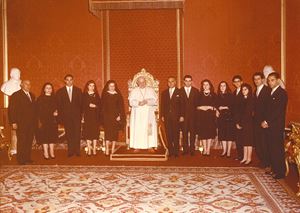
June 24, 1959 Pope John XXIII receives Minister Bernardo Mattarella, father of Piersanti and Sergio, with his family.
So here is Piersanti Mattarella, boy at the Catholic Action rallies. Or in February 1958 in the presence of Pope Pius XII, together with his father Bernardo (then minister) and the whole family; and the following year received by Pope John XXIII. Or together with the other brothers for a photo-site in the living room. Or again, in October 1958 by car, intent on leaning out of the window alongside his wife Irma, radiant under the white veil.

Austria_agosto 1978. With her daughter Maria on the boat that connects Vienna to Melz.
Intimate photos, such as the one taken in 1967 in which Mary embraces, the firstborn who recently disappeared, after the electoral results that saw him arrive at the regional parliament for the first time.
Images that flow into history with a capital “S”: the political meetings of the early years, the election to the Municipality of Palermo in 1964, in the years in which Vito Ciancimino had the dominion of the party cards; the proximity to Aldo Moro determined to change from within the DC and who in 1976 wants it within the National Party Council; the Regional Department of Budget; and, in 1978, the Presidency of the Sicilian Region and its revolutionary program in favor of transparency in regional bureaucracy.

Palermo, 11 June 1967. Piersanti embraces little Maria after the first election to regional deputy
“We started from the photos – says Sergio Intrere – to make a narrative that was as complete as possible”.
The images and panels tell the stages of public life, over the years of the historical compromise and the Moro kidnapping and pieces of private life. In these shots, the rhythms seem to be more slow, the less frantic breath: there is the journey with the family to Paris in 1977, the panorama and the Eiffel Tower behind; the dance with his wife in Amici’s house; The smiles on the boat that connects Vienna to Melz together with his daughter Maria in 1978. And many, many other stolen shots while Mattarella is intent on reading the newspapers, the mind inside and beyond the evolution of events.

Paris, September 1977. On vacation with her fifteen year old daughter.
“The reforming action of Mattarella in Sicily is so strong that, after the murder of Aldo Moro, his name circulates as a probable national deputy secretary of the DC”, reads one of the educational panels that also make use of the advice of the biographer of Mattarella, Giovanni Grasso. Piersanti rejects any maneuver that leads him to the National Parliament to continue the work in Sicily. Already in 1979, when the regional council enters crisis, Mattarella confides to a Roman friend to “feel death beside it as he walks”.
He was killed on January 6, 1980 while he is about to go to church with his wife, daughter Maria and the mother -in -law. An event that will also change the life of his brother Sergio, the first to help him, who will leave teaching to devote himself full time to politics. In “The Mourning Room”, the day of the murder is marked by the original newspapers of the time that tell the pain and excitement of those moments together with the declarations of many political exponents and not of the time. “Dismay”, he titled the hour, publishing an extraordinary edition. “Sicily in the darkest hour” was the opening title of the Giornale di Sicilia. While the people: “Still an infamous political crime affects the DC and the country to the heart”.

Caltagirone, 30 November 1979: Piersanti Mattarella at the DC friendship party
45 years after the murder, the names of his killers are not yet known. From the beginning the investigation followed the track of mix between the far right and the Cosa Nostra. In 1995 they were sentenced to life imprisonment as instigators: the mafia bosses Salvatore Riina, Michele Greco, Bernardo Brusca, Bernardo Provenzano, Giuseppe Calò, Francesco Madonia and Nené Geraci, while they were acquitted of the accusation of being performers of the murder, black terrorists Valerio Fioravanti and Gilberto Cavallini. In 2018 the Palermo prosecutor reopened the investigation.
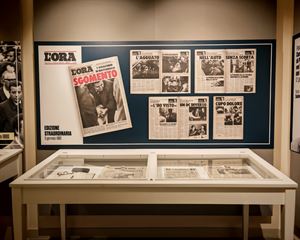
The pages of the time of Palermo the day after the attack on the president of the Sicilian Region.
The words told by Maria Trinino, who on January 6, 1980 was head of cabinet of President Piersanti Mattarella, called to cut the ribbon of the exhibition, remain suspended. To not make the family worry, the president of the region had confided: “If something happens to me, you know my trip to Rome has to do with it”.
The exhibition will be visited until the end of June from Thursday to Sunday from 10 to 18, with extraordinary opening on 20 and 21 April, Easter Sunday and the Monday of the Angel.





